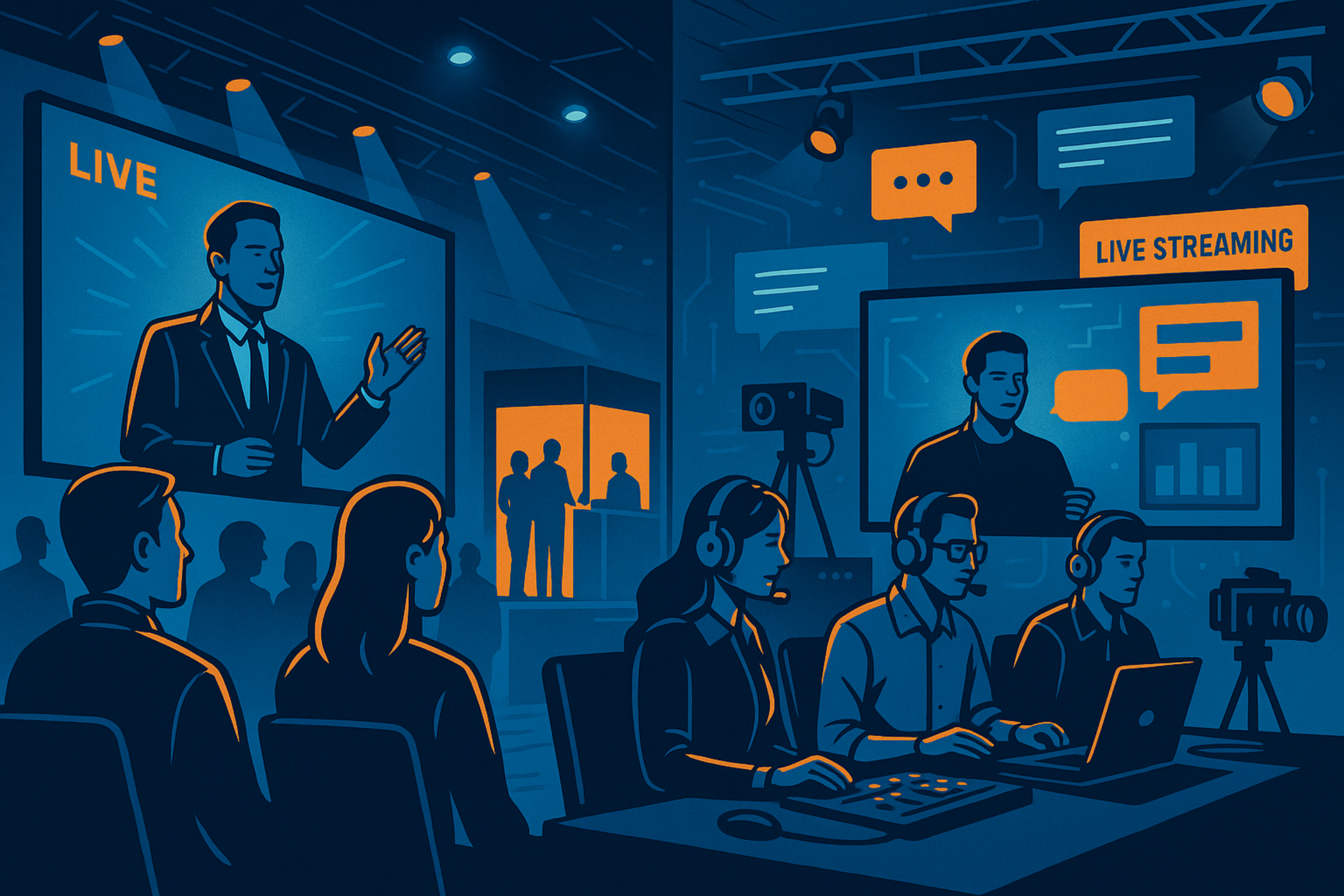Over the last few years, the event industry has seen a dramatic transformation. What started as a necessary pivot during the pandemic has become a permanent fixture in event strategy: hybrid events.
Blending in-person engagement with the power of digital reach, hybrid events offer brands the best of both worlds—and in 2025, they’re not just a backup plan. They’re the new standard.
If you’re a brand or agency exploring hybrid event solutions, here’s what you need to know to plan, produce, and pull one off successfully.
What Is a Hybrid Event?
A hybrid event combines a physical, in-person experience with a virtual component—allowing audiences to engage with your content whether they're on the show floor or tuning in from home.
It’s more than just turning on a camera. Done right, hybrid events offer two unique experiences that feel seamless and connected, not like one is an afterthought.
Why Hybrid Events Work
1. Expanded ReachWith event live streaming, you’re no longer limited by venue capacity or travel budgets. Remote attendees can participate from anywhere in the world—drastically increasing your exposure.
2. Enhanced EngagementInteractive tools like live Q&A, polls, and social chat bring online viewers into the action. Meanwhile, in-person attendees get immersive AV and hands-on experiences.
3. More Data, Better InsightsDigital platforms offer robust analytics—giving you valuable insight into attendance, viewing time, engagement levels, and content performance.
4. Flexibility and RedundancyIf someone can’t attend in person, they can still participate. Hybrid models also provide a safety net when travel, weather, or logistics change unexpectedly.
How to Plan a Successful Hybrid Event
1. Design Two Complementary ExperiencesEach audience—live and virtual—should feel like the event was built with them in mind. Customize the content flow, visuals, and interactions accordingly.
2. Partner with the Right AV TeamThe key to smooth hybrid execution is flawless event AV production. At Stamm Media, we help brands craft synchronized experiences with:
- Multi-camera live streaming
- Dedicated virtual platform integration
- In-room LED walls and projection
- Custom lighting and audio design
3. Keep Engagement Front and CenterFor virtual audiences, don’t just “broadcast.” Give them ways to participate:
💬 Chat functions
📊 Live polls
📸 Backstage access
📱 Social hashtag walls
4. Rehearse Like It’s ShowtimeHybrid means more moving parts—multiple teams, tech layers, and timing cues. A detailed run-through helps you catch issues before they reach your audience.
Real-World Application: Tech Demos That Travel
One of our tech clients recently hosted a hybrid product launch that reached live attendees in Chicago and virtual participants across five time zones. With synchronized lighting, remote camera switching, and real-time interaction, both audiences got the same high-impact reveal—without missing a beat.
The results? Increased leads, stronger follow-up, and a digital replay library that extended the life of the event.
Final Thoughts
In 2025, hybrid event solutions aren’t optional—they’re expected. They amplify your reach, create lasting value, and allow brands to meet people where they are.
If you’re ready to level up your event live streaming and hybrid production strategy, the team at Stamm Media is here to help.
🎥 Let’s make your next event unforgettable—onsite and online.
